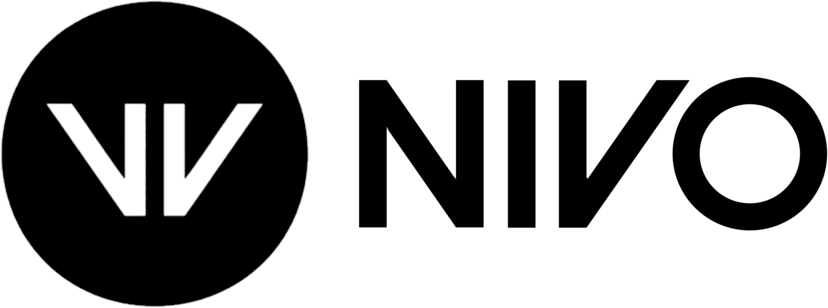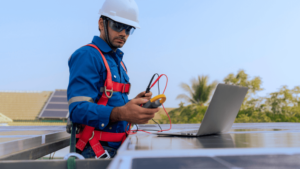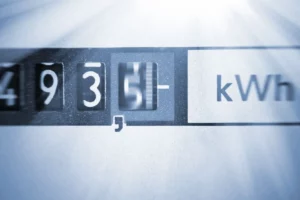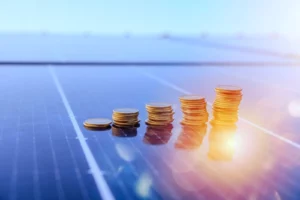As the demand for renewable energy sources soars, solar power systems have become increasingly popular among homeowners. At the heart of these systems lies the solar inverter, a critical component that transforms solar energy into usable electricity for our homes.
This guide delves into the fundamentals of solar inverters, exploring their types, benefits, costs, and how you can select the right one for your Houston home.
What is a Solar Inverter?
A solar inverter is a crucial component in a solar energy system. It’s the device that takes the direct current (DC) electricity generated by solar panels and converts it into alternating current (AC) electricity. This conversion is important because most homes and electrical appliances run on AC power, not DC.
Essentially, the inverter makes the electricity produced by solar panels usable for your home’s lighting, appliances, and other electrical devices. Beyond this, solar inverters also play a key role in monitoring the system’s performance and ensuring it operates efficiently. They can detect issues like fluctuations in power or problems with the solar panels, helping maintain the system’s overall health and safety.
How Does A Solar Inverter Work?
A solar inverter works by taking the direct current (DC) electricity generated by solar panels and converting it into alternating current (AC) electricity, which is the type of power used by most homes and electrical devices. Here’s a closer look at how this process unfolds:
- Conversion from DC to AC
Solar panels absorb sunlight and convert it into DC electricity. This electricity is then fed into the solar inverter. Inside the inverter, a series of electronic components and circuits work together to change the DC electricity into AC electricity. This involves changing the current’s direction back and forth many times per second, thus creating the alternating current that can be used by household appliances and the electrical grid.
- System Monitoring and Management
Beyond just converting electricity, solar inverters are also equipped with technology to monitor the performance of the solar power system. They can track how much electricity is being produced by the solar panels and how much of that electricity is being consumed or fed back into the grid. This data is crucial for optimizing the efficiency of the solar energy system.
Inverters can identify any performance issues as well, such as fluctuations in the electricity output due to shading or panel degradation. They can even detect safety hazards, automatically shutting down the system if a risk is identified to protect the components and users.
Why Is It Called A Solar Inverter?
The term “solar inverter” stems from its role in inverting the electrical current type. It converts solar-generated DC power into AC power, which is why it’s referred to as a solar inverter, highlighting its specific use in solar energy systems.

What Are The Types of Solar Inverters
Solar inverters are key components in converting solar energy into usable power, and they come in several types, each designed to meet specific needs and configurations of solar energy systems. From managing energy conversion at different scales to optimizing performance under various conditions, the type of inverter you choose can significantly impact the efficiency and flexibility of your solar setup.
Here’s a look at the main types of solar inverters available:
String Inverter
A string inverter is the most traditional form of solar inverter. In systems using string inverters, solar panels are connected in a series to form a “string,” and the DC electricity from these panels is sent to a single inverter. The inverter then converts the collective DC power into AC power. String inverters are cost-effective and efficient for installations where panels are exposed to similar lighting conditions. However, the performance of the entire string can be affected if one panel is shaded or underperforming.
Microinverter
Microinverters represent a more granular approach to solar energy conversion. Unlike string inverters that manage multiple panels collectively, each solar panel in a microinverter system has its own small inverter attached directly to it. This setup allows for individual optimization of each panel’s output, which can significantly enhance overall system performance, especially in varied shading conditions.
Microinverters also enable easier expansion of the solar system and provide detailed monitoring of each panel’s performance.
String Inverter With Optimizers
String inverters with power optimizers combine aspects of both string and microinverter systems. Power optimizers are attached to each solar panel, similar to microinverters, but instead of converting DC to AC power at each panel, they condition the DC electricity and send it to a centralized string inverter. This setup optimizes the output of each panel to ensure that the string inverter operates at maximum efficiency, offering a good balance between performance and cost.
Hybrid Inverter
Hybrid inverters, also known as multi-mode inverters, are designed to work with solar panels and battery storage systems. They not only convert DC electricity from solar panels into AC electricity for home use but also can manage the flow of electricity to and from a battery system. This allows for energy storage when production exceeds consumption and supplies power during times of low sunlight or peak demand. Hybrid inverters are ideal for systems looking to maximize energy independence and efficiency.
Pros & Cons of Micro Inverters
Choosing the right solar inverter is crucial for getting the most out of your solar energy system. Each type of inverter comes with its own set of advantages and disadvantages, impacting everything from cost to efficiency and system flexibility. Understanding these can help you make an informed decision that best suits your specific solar power needs. Let’s dive into the pros and cons of each inverter type to see how they stack up:
String Inverter Pros & Cons
Pros
- Cost-Effective: String inverters are generally less expensive than other types, making them a budget-friendly option.
- Simplicity: With a single inverter for the entire system, installation and maintenance are straightforward.
Cons
- Vulnerability to Shading: If one panel is shaded or underperforms, it can reduce the output of the entire string of panels.
- Limited Monitoring: You can only monitor the performance of the entire string, not individual panels.
Micro Inverter Pros & Cons
Pros
- Performance in Shade: Each panel operates independently, so shading on one doesn’t affect the rest.
- Detailed Monitoring: Allows for monitoring the performance of each individual panel.
Cons
- Higher Cost: Microinverters are more expensive upfront due to the need for one per panel.
- Complex Installation: Installing an inverter on each panel requires more time and effort.
String Inverter With Optimizers Pros & Cons
Pros
- Improved Efficiency: Power optimizers enhance the performance of each panel, leading to higher overall system efficiency.
- Individual Panel Monitoring: Like microinverters, they allow for detailed performance tracking of each panel.
Cons
- Moderate Cost: The system is more expensive than basic string inverters but generally less costly than microinverters.
- Additional Components: Requires the installation of power optimizers on each panel, adding to the complexity.
Hybrid Inverter Pros & Cons
Pros
- Energy Storage: Enables the integration of battery storage, allowing you to store excess energy for later use.
- Versatility: Can manage both solar and battery storage, making it ideal for systems designed for energy independence.
Cons
- Higher Initial Cost: Hybrid inverters are usually more expensive due to their advanced functionality.
- Complexity: The integration of batteries and additional features may require a more complicated setup and configuration.
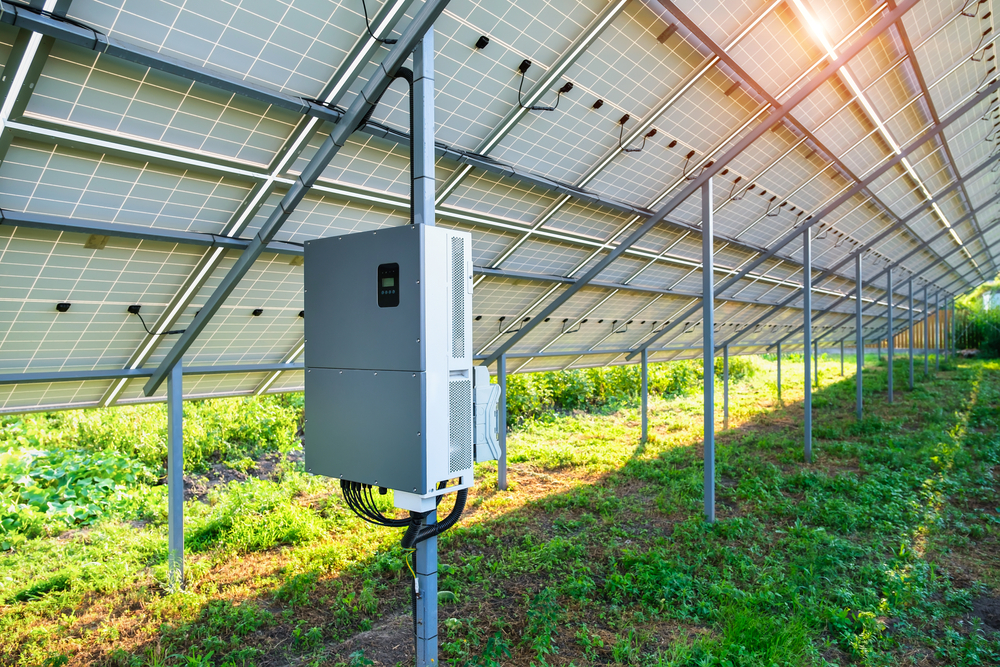
How Much Does A Solar Inverter Cost?
The cost of a solar inverter can vary widely depending on the type, capacity, brand, and features. Generally, for residential solar energy systems, you might expect to pay anywhere from $1,000 to $2,500 for a string inverter. This price range can cover most average-sized home solar installations. Microinverters, on the other hand, are typically more expensive, with costs ranging from $150 to $300 per unit. Since each solar panel requires its own microinverter, the total cost can add up quickly for a system with multiple panels.
String inverters with power optimizers offer a middle ground in terms of pricing. The combined cost of a string inverter plus power optimizers can range from $2,000 to $4,000 for a standard home solar setup. This option provides some of the benefits of microinverters, like enhanced performance and individual panel monitoring, without the higher cost associated with having an inverter for each panel.
Hybrid inverters are the most advanced, capable of managing both solar panel input and battery storage, and their prices reflect this complexity. For a hybrid inverter, prices can start around $2,000 and can go up to $5,000 or more, depending on the system’s capacity and specifications.
Talk to a trusted solar partner like Nivo Solar to get an idea on how much you actually need for your solar inverter.
How Long Does A Solar Inverter Last?
A solar inverter typically has a lifespan of around 10 to 15 years, which is generally shorter than the lifespan of solar panels themselves, which can last 25 to 30 years or more. This difference means that you might need to replace the inverter at least once during the lifetime of your solar energy system. The exact lifespan of a solar inverter can vary based on several factors, including the brand, model, installation environment, and how well it’s maintained.
Some high-quality inverters come with warranties that can extend up to 10 years, and in some cases, these warranties can be extended further for an additional cost.
As technology advances, newer models of inverters may offer improved efficiency and features, as well as potentially longer lifespans. Regular maintenance and monitoring can also help extend the life of your solar inverter, ensuring it operates efficiently for as long as possible.
What To Look For In A Solar Inverter
When choosing a solar inverter for your solar energy system, there are several important factors to consider to ensure you select a model that best suits your needs. Here’s what to look for:
- Compatibility with Your Solar Panels
Ensure the inverter is compatible with the specifications of your solar panels. The inverter needs to handle the voltage and current your panels produce.
- Efficiency
Look at the inverter’s efficiency rating, which tells you how effectively it converts DC electricity to AC. Higher efficiency means more solar power is usable in your home, leading to better overall system performance.
- Size and Capacity
The inverter’s capacity should match the output of your solar panel system. It needs to be able to handle the peak power your panels can generate. An inverter that’s too small won’t efficiently use all the power your panels produce, while one that’s too large may not operate as efficiently.
- Type of Inverter
Consider which type of inverter suits your needs—string inverter, microinverter, string inverter with power optimizers, or hybrid inverter. Each has its pros and cons, depending on your system’s size, layout, and whether you plan to include battery storage.
- Features and Technology
Some inverters come with advanced features like monitoring capabilities, which allow you to track your system’s performance in real time, and smart grid compatibility, which can be important for future scalability and integration with battery storage.
- Warranty and Reliability
Look for a reputable brand with a strong warranty. A longer warranty period can give you peace of mind about your investment. Research the manufacturer’s reputation for reliability and customer service.
- Cost
While not the only factor, the cost of the inverter should be considered in the context of its features, efficiency, and expected lifespan. Sometimes, spending more upfront for a higher-quality inverter can save money in the long run through better performance and fewer replacements.
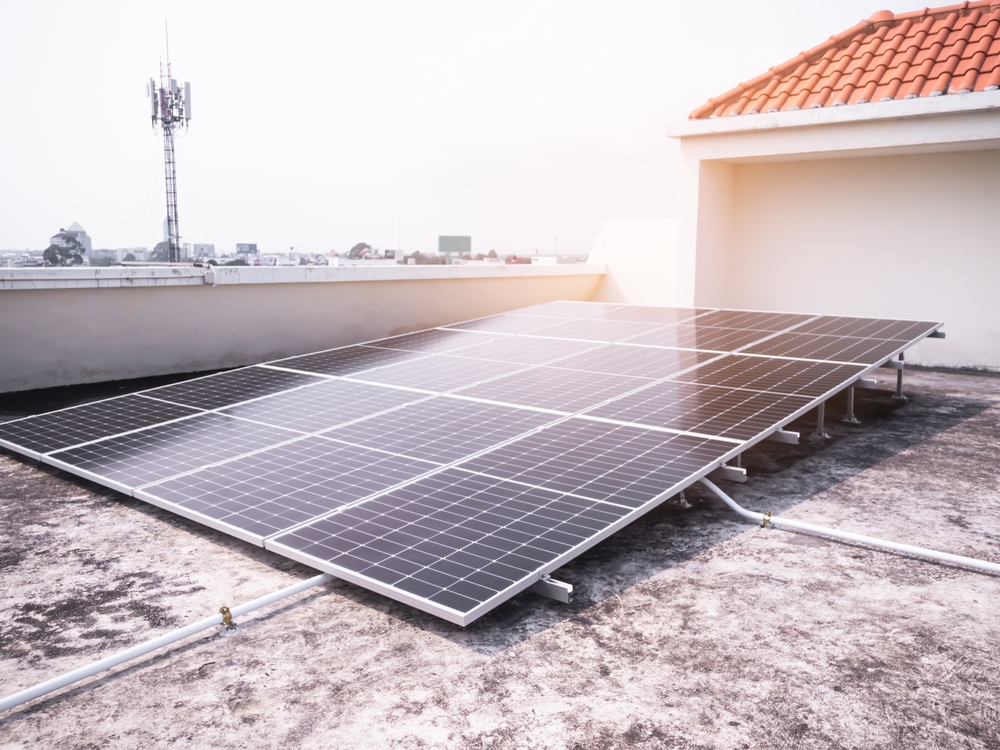
How to Determine Which Solar Inverter Is Right For My Houston Home
Choosing the best inverter for solar or selecting the right solar power inverter involves assessing your home’s energy needs, roof shading conditions, and future energy goals. Consulting with a professional solar installer like Nivo Solar can provide tailored advice and ensure you select the best inverter for your situation.
Located at 1334 Brittmoore Rd Suite 1903, Houston, TX 77043, Nivo Solar stands as one of the leading residential solar installation companies in Houston. With a focus on quality and customer satisfaction, Nivo Solar offers comprehensive solar solutions, including personalized advice on selecting the right solar inverter for your home. Enhance your energy independence and contribute to a greener planet with Nivo Solar.
Ready to make the switch to solar? Contact Nivo Solar today and embark on your journey to a more sustainable and energy-efficient home.
